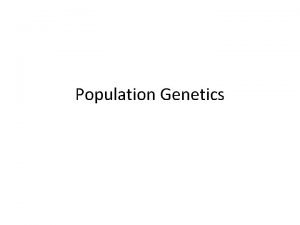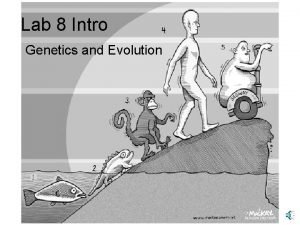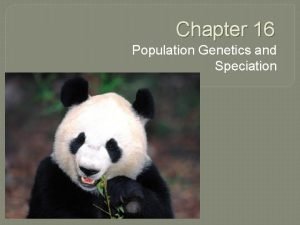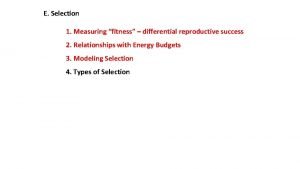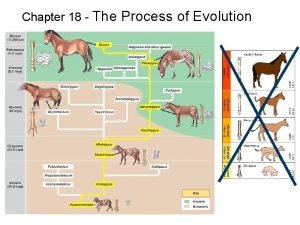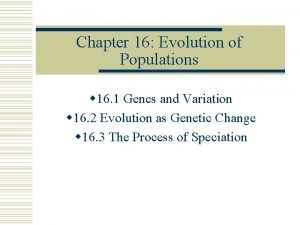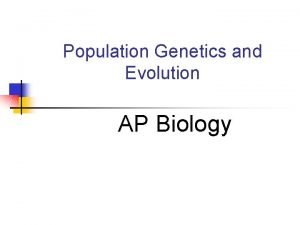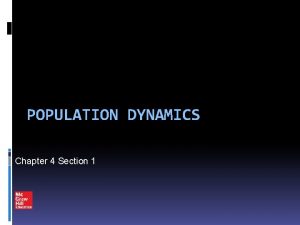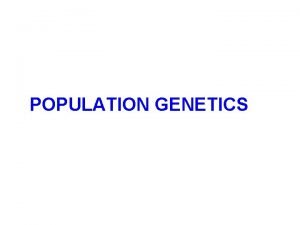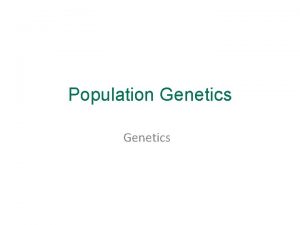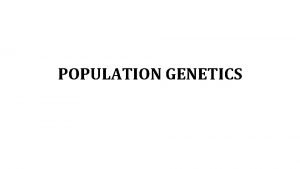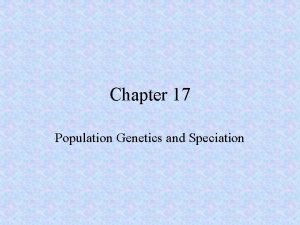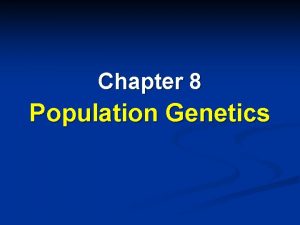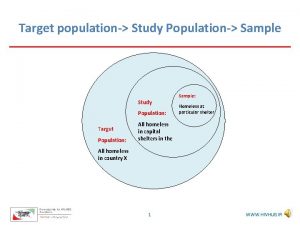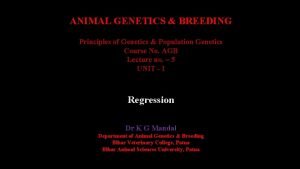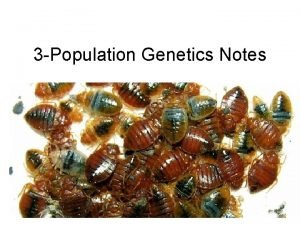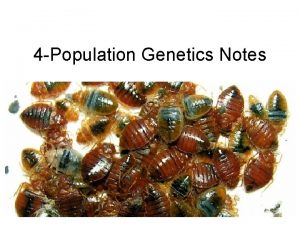Population Genetics Chapter 4 Population Genetics The study













- Slides: 13

Population Genetics Chapter 4

Population Genetics • The study of biological populations and the changes in genetic composition • Involves the examination and modelling of changes in the frequencies of traits in populations • Individual organisms do not evolve, populations do • Largest reproductive population is the species • Speciation - the formation of a new, distinct species

Evolution and Variation • From a modern genetic perspective, we define evolution as a change in allele frequency from one generation to the next • Allele frequency refers to the indicators of the genetic makeup of a population, the members of which share a common gene pool, or the sum of alleles carried by the population • Factors that produce and redistribute variation: • • Mutation Gene Flow Genetic Drift and Founder Effect Recombination

Evolutionary Change Certain conditions must be assumed for a population to remain in genetic equilibrium: • Mutation must not be taking place • The population must be infinitely large • Individuals from neighboring populations must not introduce new alleles • Mating must take place at random • Natural selection must not be occurring

Mutation • Mutation is a molecular alteration in genetic material: Is always random Must occur in a gamete to effect evolution Rates for any given trait are usually low When combined with natural selection, evolutionary changes can occur and can occur more rapidly • Only way to produce new genes • Can occur due to mistakes in DNA replication, exposure to chemicals, temperature fluctuations, exposure to radiation, etc. • •

Gene Flow • The exchange of genes between populations. • If individuals move temporarily and mate in the new population (leaving a genetic contribution), they don’t necessarily stay there • Consistent feature of human evolution • Example: The offspring of U. S. soldiers and Vietnamese women represent gene flow, even though the fathers returned to their native population

Genetic Drift • Genetic drift occurs solely because the population is small: • Alleles with low frequencies may not be passed to offspring and eventually disappear from the population • Population Bottleneck • Reduction in the size of a population due to environmental events • One cause of genetic drift

Founder Effect • Occurs when a small band of “founders” leaves its parent group and forms a colony elsewhere • A new population is established and as long as mates are chosen within this population, all the members will be descended from the founders • A once rare allele that was carried by even one of the founders can eventually become common

Recombination • The production of offspring with combinations of traits that differ from those found in either parent • Leads to a novel set of genetic results • Doesn’t change allele frequencies, or cause evolution • Changes the composition of parts of chromosomes • Affects how some genes act, and slight changes of gene function can become material for natural selection to act upon

Genetic Equilibrium • Punctuated Equilibrium • Evolution marked by periods of rapid change and/or speciation, set between long periods of little or no change • Genetic Equilibrium • Evolution can be defined as a change in the gene pool of a population • If not evolving, these frequencies remain constant • The calculation for genetic equilibrium is known as Hardy-Weinberg equilibrium • The formula is: p 2+2 pq+q 2=1 • p = frequency of dominant alleles • q = frequency of recessive alleles

Hardy-Weinberg Formula • Genetic equilibrium is only a hypothetical state • Populations are always evolving • The Hardy-Weinberg Formula can be used to measure the strength of evolutionary forces by making comparisons between the hypothetic situation of no change and the observed situations of change • The formula can be used to test hypotheses about evolutionary change and also to measure the increase, decrease, of static situation in regard to specific genetic conditions including genetic diseases

Non-random Mating • The equilibrium model assumes that individuals in the population are mating at random • A consanguineous mating is a mating between relatives • May have a significant effect on rare alleles • Another example of nonrandom mating would be assortive mating • Similar mates reproduce with one another more frequently

Differential Fertility • Genetic equilibrium assumes that all mating is equally fertile, but this is obviously not the case • Differential fertility and mortality are both examples of natural selection, the heart of evolutionary theory • Factors that result in greater fertility will be passed on to the next generation with higher frequency • Conditions that result in decreased fertility or higher mortality will tend to be eliminated
 Chapter 7 extending mendelian genetics
Chapter 7 extending mendelian genetics Chapter 4 population ecology worksheet answer key
Chapter 4 population ecology worksheet answer key Population ecology section 1 population dynamics
Population ecology section 1 population dynamics What is fst
What is fst Similar
Similar Population genetics and speciation worksheet answer key
Population genetics and speciation worksheet answer key Population genetics
Population genetics The far side comics
The far side comics Population genetics
Population genetics Population genetics definition
Population genetics definition Whats a density independent factor
Whats a density independent factor Intermediate inheritance
Intermediate inheritance Section 1 population dynamics
Section 1 population dynamics Population ecology section 1 population dynamics
Population ecology section 1 population dynamics



